Since 2014 settled in rural work and life at the commune / farm / homestead / sanctuary / school / art project Salmon Creek Farm / @salmon_creek_farm
Contact: PO Box 909, Albion, California 95410 / 2025 (at) fritzhaeg (dot) com / @fritz_____
Recent Exhibitions: Garden Futures: Designing with Nature, Vitra Design Museum / ‘Proposals for a Plaza’ / ‘Propuestas para una Plaza’ with Nils Norman, Museo Jumex, Mexico City
Recent Writing: Building Salmon Creek Farm: inside California’s ultimate creative retreat, Wallpaper* magazine / Fritz Haeg: Living with the Land, Frieze / A Garden Manifesto
Edited by Olivia Laing and Richard Porter
Recent interviews: Ahali Conversations / feature in Apartamento #28
~
FRITZ HAEG‘s work has included animal architecture, crocheted rugs, domestic gatherings, edible gardens, educational environments, preserved foods, public dances, sculptural knitwear, temporary encampments, urban parades, wild landscapes, and occasionally buildings for people. Recent projects include Edible Estates – an international series of domestic edible landscapes; Animal Estates – a housing initiative for native wildlife in cities around the world; Domestic Integrities – installations and gatherings staged on massive crocheted rugs of discarded clothing and textiles that expand as they travel; various projects of designing, constructing, parading & rewilding; and Sundown Schoolhouse – an evolving series of educational environments and initiatives which evolved out of the Sundown Salon gatherings at his geodesic home base in the hills of Los Angeles. In late 2014 Fritz Haeg began a long-term project and new chapter of work with the purchase of the historic 1970’s commune Salmon Creek Farm on the Mendocino Coast.
Haeg studied architecture in Italy at the Istituto Universitario di Architettura di Venezia and Carnegie Mellon University, where he received his B. Arch. He is a Rome Prize fellow – in residence at the American Academy in Rome from 2010-2011, a MacDowell Colony Fellow (2007, 2009 and 2010), Montalvo Arts Center fellow (2012), nominated for National Design Awards in 2009 and 2010 and a 2014 California Community Foundation Visual Art Fellow. He has variously taught in architecture, design, and fine art programs at Princeton University, California Institute of the Arts, Art Center College of Design, Parsons School of Design, the University of Southern California, and Wayne State University in Detroit as the Elaine L. Jacob Chair in Visual Art visiting professor.
Haeg has produced and exhibited projects at the Walker Art Center; the Whitney Museum of American Art; the Guggenheim Museum; the Museum of Modern Art; Tate Modern; the Hayward Gallery; Arup Phase 2, London; the Liverpool Biennial; Museo Jumex, Mexico City; Casco Office of Art, Design and Theory, Utrecht; Stroom, Den Haag; the Netherlands Architecture Institute; Pollinaria, Abruzzo; Blood Mountain Foundation, Budapest; SALT Beyoğlu, Istanbul; the Israeli Center for Digital Arts; Mass MoCA; the deCordova Museum and Sculpture Park; the Center for Advanced Visual Studies at MIT; The Aldrich Contemporary Art Museum; the Institute of Contemporary Art, Philadelphia; The Indianapolis Museum of Art; the Broad Art Museum, East Lansing; San Francisco Museum of Modern Art; the Wattis Institute, San Francisco; the Berkeley Art Museum; the Hammer Museum; the MAK Center, Los Angeles among other institutions. His work has been published internationally, including profiles and features in The New York Times, Financial Times, Frieze, Artforum, The Independent, Dwell, Men’s Vogue, BBC, NPR, ABC World News Tonight, CBS Evening News, and The Martha Stewart Show. His books include “The Sundown Salon Unfolding Archive” (Evil Twin Publications, 2009) and “Edible Estates: Attack on the Front Lawn” (Metropolis Books, 2008. 2nd ed. 2010), “Wildflowering LA” (LAND 2014), “Propuestas para una Plaza” (Museo Jumex, 2019).
Salmon Creek Farm
Salmon Creek Farm was established as a commune on the Mendocino Coast in Albion, California in 1971 by a group of young people disenchanted with mainstream society and searching for something else. Along with many other communes in the area, SCF grew out of the student protest culture of the late 60’s, resisting the Vietnam war and general mindless consumer conformity, while promoting issues like civil rights, gay liberation, and environmental consciousness. Turning their back on systems they no longer believed in, they learned how to build their own homes, make their own clothes, grow their own food while living communally, exploring Native American rituals, and practicing consensus decision-making. One by one the original communards moved away – three of whom settled on three sides of the property – until an official closing ceremony was held in 2012. With its purchase by artist Fritz Haeg in November 2014, Salmon Creek Farm continues as a place to take a step back from contemporary urban society and starts a new chapter as a long-term art project formed by many hands, a new sort of commune-farm-homestead-sanctuary-school hybrid. (Check out the Instagram page, this New York Times story, the feature in Wallpaper*, and the Frieze videos “Salmon Creek Farm Part One: Beginnings” and “Part Two: Futures” )
designing, constructing, parading, rewilding, etc…
A series of related projects – dating back to his early architecture work – span a wide range of sizes and durations include designs for buildings, temporary encampments, scores for processions, knitted wearable sculptures and native landscape restorations. Recent examples include the Bernardi Residence in the Silver Lake hills of Los Angeles featured in the New York Times; the gallery design for peres projects in Los Angeles’ Chinatown; the score for the East Meets West Interchange Overpass Parade (2008), commissioned by the Indianapolis Museum of Art; a ground floor installation Dome Colony X in the San Gabriels (2009) at X Initiative in Manhattan; Something for Everyone (2010), projects throughout the grounds of the Aldrich Contemporary Art Museum; Composted Constructions (2011), a series of fabrications of recycled materials in Den Haag commissioned by Stroom; The Princeton Student Colony (2012); The Everton Park Foraging Spiral and Basecamp commissioned for the 2012 Liverpool Biennial; the Foraging Circle,(2013) a permanent Minneapolis Sculpture Garden/Walker Art Center installation; the native wildflower sowing initiative, Wildflowering L.A. (2013-14); and in 2014 a new series of cape/caftan/Parangolés/scarf/shawl/vestment/wrap knitted wearable sculptures.and most recently the year-long installation Proposals for a Plaza / Propuestas para tuna Plaza inspired by “A Pattern Language” in collaboration with Nils Norman for the sculpture plaza of Museo Jumex in Mexico City.
Sundown Salon & Sundown Schoolhouse
Sundown Salon gatherings occurred on periodic Sunday afternoons from 2001-2006 in the geodesic dome on Sundown Drive, galvanizing an extended community of friends, collaborators and peers from Los Angeles and beyond through events, happenings, gatherings, meetings, pageantry, performances, shows, stunts and spectacles. In 2009 “Salon Colada: Miami” is presented by MOCA Miami and “The Sundown Salon Unfolding Archive” (Evil Twin Publications) is released, documenting the series of events with photos and stories contributed by hundreds of the artists who participated. The 380 page accordion folding book unfurls to become a 140 foot long instant exhibition. In 2006 Sundown Salon transformed into Sundown Schoolhouse, an evolving educational environment originally based in the geodesic dome. The Schoolhouse was itinerant from 2007 to 2012, functioning at times as the personal school of chief student Fritz Haeg. Programming guided by his curiosities and housed in a series of dome tent environments where local artists and experts lead workshops, classes and seminars around particular themes and topics. Recent highlights have included Practicing Moving at the Center for the Arts Eagle Rock, Sundown Schoolhouse of Queer Home Economics at the Hayward Gallery in London, and At Home in L.A. at Human Resources. In summer 2014 the Schoolhouse re-launches regular seasonal enrollment programming at it’s home base with the 12 week session of The Los Angeles Seminary for Embodied and Civic Arts.
Edible Estates
Edible Estates was initiated on Independence Day 2005 with the planting of the first in the series of gardens in Salina, Kansas, the geographic center of the United States. Domestic front lawns are replaced with edible landscapes which are then documented in photos, videos, stories, printed materials, and exhibitions. Other regional prototype gardens have since been planted in Lakewood, CA in 2006; Maplewood, NJ and London in 2007; Austin, Baltimore, and Descanso Gardens, Los Angeles in 2008; Manhattan in 2009; Ridgefield, CT and Rome in 2010; Istanbul in 2011; Budapest, Hungary in 2012. The final three editions are planted in Holon, Isreal; Aarhus, Denmark; and Minneapolis-St. Paul, MN in 2013. “Edible Estates: Attack on the Front Lawn” (Metropolis Books, 2010, 2nd ed.) documents the first eight gardens in the series, with stories from the garden owners and framed by essays from renowned garden writers.
Animal Estates
Animal Estates proposes the strategic reintroduction of native animals into our cities with an ongoing series of regional events, publications, exhibitions, and estate designs. The project debuted in New York City at the 2008 Whitney Biennial with commissioned performances and installations in front of the museum, including a 10 foot diameter eagle’s nest perched over the entry canopy. It has since been followed by six other editions in 2008, commissioned by museums and art institutions in the U.S. and abroad including Center for Advanced Visual Studies at MIT, Cambridge; SFMOMA, San Francisco; Casco, Utrecht; Cooley Gallery at Reed College, Portland; and most recently Animal Estates London HQ: Urban Wildlife Client Services at Arup Phase 2 in 2011 and The Port of Rotterdam in 2013.
Domestic Integrities
Domestic Integrities turns it’s attention to local patterns and rituals of interior domestic landscapes, the way we use what we resourcefully find around us to artfully make ourselves at home, bringing the outdoors in. Domestic Integrity Fields are charged sites – on crocheted rugs of discarded textiles – to test, perform, and present how we want to live. One rug in each continent gradually expands as it travels from city to city. Full editions of the project are commissioned and presented by Pollinaria in Abruzzo (Jun 2012 – June 2013); MoMA, New York (Sep – Nov 2012); The MSU Broad Art Museum (Sep 2012 – Jan 2013); The Hammer Museum (Feb – Apr 2013); The deCordeva Museum (May – Aug 2013); The Walker Art Center (Aug – Nov 2013) with Fritz Haeg: At Home in the City an exhibition and year-long series of projects, events and installations; and The Berkeley Art Museum as a part of the experimental exhibition The Possible (Jan – May 2014) curated by artist David Wilson.
Selected Profiles & Features
New York Times Topics Page / T Magazine / NYT – Style / NYT – Bernardi Residence / NYT – Edible Estates / Financial Times / Los Angeles Times profile / NPR – Animal Estates / NPR – Edible Estates / The Independent / Frieze – essay, 2009 / Frieze essay, 2010 / Frieze – profile / Frieze – Edible Estates / BBC Radio / Dwell video / Dwell Magazine / Men’s Vogue (pdf) / KCET / Creative Time / Archinect / Treehugger / ABC World News Tonight / index magazine / complete press list
Past Assistants
Keith Clougherty, Domestic Integrities assistant, 2013 / Reid Ulrich, studio assistant 2012 / Marco Rovacchi, Domestic Integrities E-1: Abruzzo, assistant, 2012 / Brent Pilkey, Sundown Schoolhouse of Queer Home Economics, director, London, 2012 / Joanne Bristol, Animal Estates London HQ director, 2011-12 / Jena Lee, studio assistant, 2009 / Claire Zitzow, studio assistant, 2009 / Colin Blodorn, studio assistant, 2008-09 / Stephanie Kern, studio assistant, Spring 2008 / Erica Browne, New York Animal Estates assistant, 2007-08 / Kim Anderson, studio assistant, 2007 / Matt Au, studio assistant, 2007 / Louis van Leer, studio, 2006-07 / Katie Bachler, Gardenlab assistant, 2005-07 / Pablo Cavero, studio intern, 2006 / Aubrey White, Gardenlab team, 2005-06 / Fiona Ryan, Sundown Salon assistant, 2005-06 / Erin Marshell, Gardenlab and studio assistant, 2005 / Sarah Skaggs, Sundown Salon assistant, 2005 / Juanita Meneses, studio assistant, Summer 2005 / Krystal Chang, studio assistant, 2004-06 / Jessica Dobkin, studio assistant, 2004 / Natascha Snellman, Sundown Salon assistant, 2004 / Marte Eknaes, studio assistant, Winter 2004-05 / Gabie Strong, studio intern, Summer 2004 / Eric Lindeman, studio intern, Summer 2004 / Brian Howe, studio intern, Summer 2004 / Scott Franklin, studio intern, Summer 2004 / Sven Neumann, Bernardi Residence consultant, Summer 2004 / Emily Eyerman, studio intern, Summer 2003 / Jonathan Kleinhample, studio intern, Summer 2003
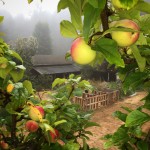
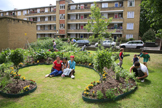
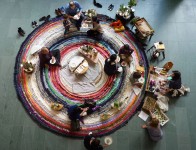

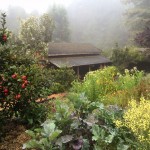
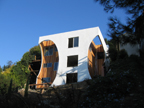
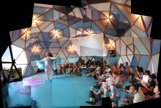
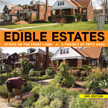
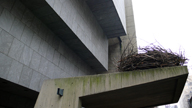
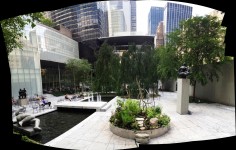
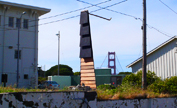
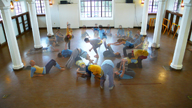
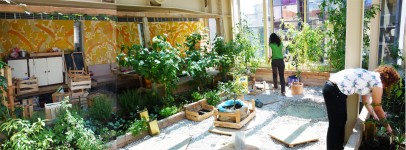
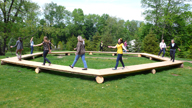
119 thoughts on - INFO & BIO
-
-
-
-
-
-
-
« Previous 1 2 3Hi Fritz,
I found you in an old CBS segment from ~2009 about “recession victory gardens,” and it sounds like what you were doing back then is exactly what I’m trying to do in my region today. I’m in the southeast, and the economic pressures on the working class here are becoming suffocating. Everyone’s struggling to make ends meet right now and it only seems to be getting worse. I’m hoping to relieve some of that pressure in part by establishing front and back yard food gardens across the local communities. Right now I have a few volunteers and I’m in the process of forming a nonprofit, and we’re looking for potential donors and partners. Even if you can’t contribute financially, something as simple as an interview on your experience doing front-yard food gardens could be invaluable to us.
If this speaks to you at all, please reach out to me.
Thank you,
Amelia
Dear Fritz,
During an interview with the American Society for Landscape Architects you stated the following, “I haven’t yet had the opportunity to plant a garden in a place that’s illegal, but I would really love to take that on. “ My partner and I recently relocated to Athens Ohio where next week [Tuesday the 10th of October], we are scheduled at our city council commission to fight for our right to grow a food garden in our front yard. While growing food in the front yard is not illegal [although our neighbors are not happy with it] but having a fence to protect that garden is [and as we found out this summer with an unprotected garden where we lost nearly our entire harvest to deer- we need a fence to protect our food.] I know this is a long shot- but I’d be curious if you would be willing to lend a supportive note to our fight or if you have any examples of other similar cases we can draw on, general thoughts/advice, etc? Much appreciation in advance, ann
Hello Ann, Thanks for reaching out and good luck with your efforts. It’s been 10 years since I wrapped up my series of Edible Estate garden projects, and not sure of what help I could be at this point, and from California – but I’ll be rooting for you!
In solidarity,
Fritz
Hello Fritz,
I met you as a french student studying in Rome in 2010 – while you were a resident of the US embassy.
I am currently working with a group of women on the settling of a community center in Grenoble, in France.
The group decided recently that they wanted to make a rug or a carpet hand-crafted.
One of the woman is experimenting the rag-rug technic. And I discovered that you (along with Hamond Harmony in the 70s : ) have used that technic in one the spaces your worked.
It is beautifully made and we are looking for suggestions and advices regarding the method. What fabrics did you use ? What is the amount of fabric and the time needed for the diameter you created ?
We hope that it is ok for you or your team to take that time, and to share your experience,
Sincerely,
Marion for “la halle des iris” (https://piscineiris.wordpress.com/)
Hi Marion!
Thanks for your message and interest in the rug project.
A video was actually produced that includes a detailed how-to:
http://www.theartassignment.com/assignments/make-a-rug
Plus a video of the rugs other folks made:
https://www.youtube.com/watch?v=bXnq7jZ2tCM
Feel free to reach out at 2023-at-fritzhaeg-dot-com
Good luck!
[…] Khanwho has published more than 12 books on the subject of DIY and off-grid living, and the artist Fritz Hagwhose art commune, Salmon Creek Farm, is made entirely of salvaged […]
[…] she creates a community garden as she did at the Brookwood House Council Estate, with the artist Fritz Haeg on a project called Edible Estates, walking the neighborhood is a crucial part of the process. […]